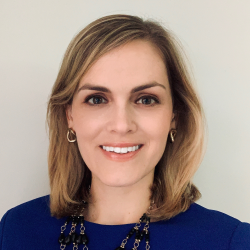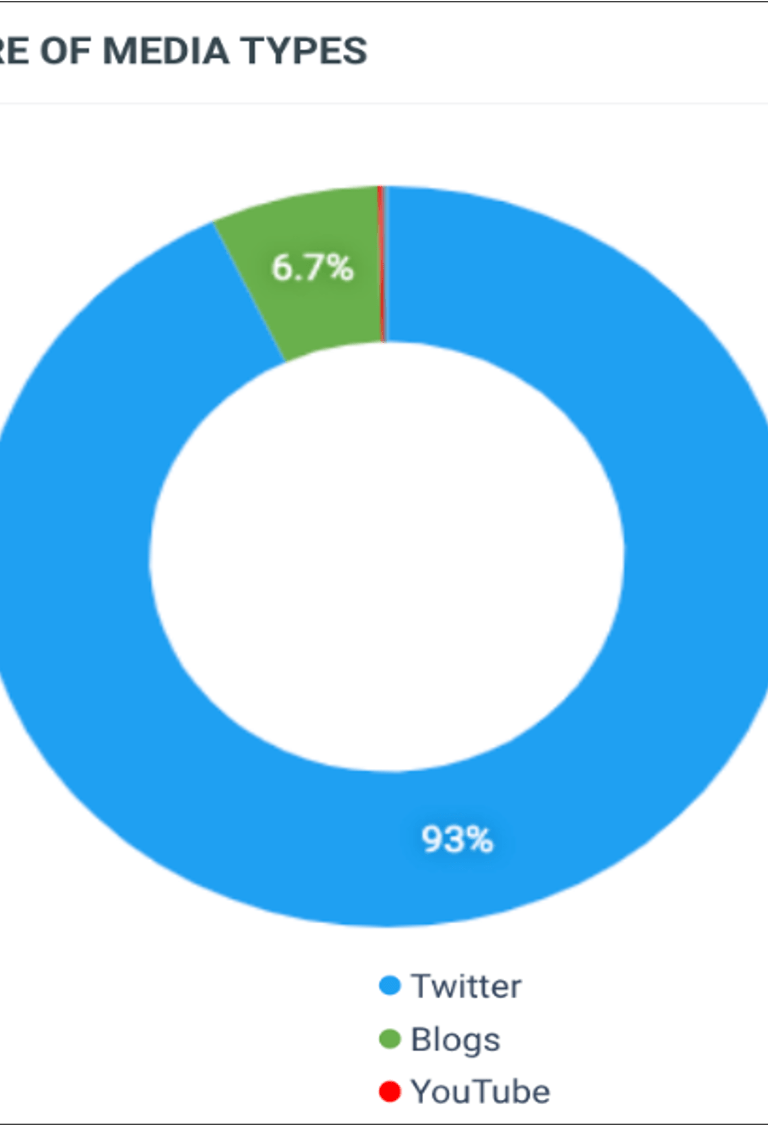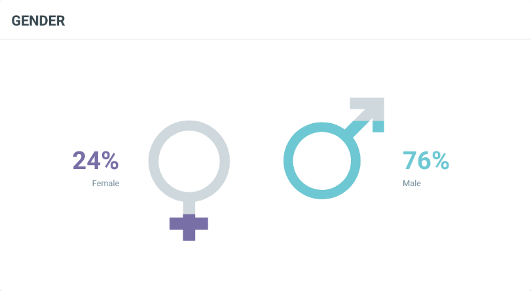Introduction
The COVID-19 pandemic disrupted life as we know it and caused unprecedented economic and social disruptions. Education systems across all countries—irrespective of their level of development—were affected as the pandemic led to sudden school closures and, for many, a shift to remote learning. Students, teachers, and parents all struggled to adapt to the sudden changes, and many studies highlight how it has led to an education crisis, widening the preexisting learning gap and affecting students from disadvantaged backgrounds the most.
The Center for Universal Education (CUE) at the Brookings Institution is interested in how the pandemic changed the role of families in their child’s education and has been researching how family engagement can contribute to education systems transformation. CUE analyzed the social media conversations of teachers, students, and parents during the various phases of the ongoing pandemic to understand what each group discussed and also the extent of overlap between their respective discussions (i.e., whether there were certain topics that were discussed by multiple groups or not). COVID-19 has presented a unique “leapfrog moment” for transforming education systems, and an important first step to achieve this would be to better understand the needs of teachers, students, and parents—who would all be most affected by education change.
This paper is the final one in a series of analyses that looks at the social media conversation around education. We chose to include India in our analysis as it has one of the largest education systems in the world, in which millions of students and families—especially those with limited resources—were affected by national lockdowns and school closures during the pandemic. We believed that a backdrop of a severe preexisting learning crisis and a new National Education Policy (NEP 2020) in the country makes it an excellent choice to better understand how teachers, students, and parents coped during the pandemic and what affected them the most. Further, several organizations in India are also a part of our Family Engagement in Education Network (FEEN) where we are researching how families and schools can work collaboratively to improve and transform education. This gave us a unique opportunity to better understand the extent to which social media conversations reflect the real-life struggles of families and teachers.
Our analysis revealed four key insights:
- Women and parents are missing from “everyday” conversations on social media: We were surprised to see that currently social media in India does not convey everyday struggles and experiences relating to schooling, such as what happens in the classroom or the difficulties of remote learning during the pandemic. Rather, people use social media to discuss education issues largely related to policy and politics. While we were able to capture the voices of teachers and students in our analyses, the voices of women and parents are missing. Less than one quarter of users in our sample identify as female, and, even though around 80 percent of users identify as parents, very few discuss their child’s education. This could signify that parents do not see social media as a place for discussing education, that parents do not see their perspective as important in their child’s education, or that discussion about a child’s education is seen as the responsibility of mothers.
- Teachers organize to demand state-level change: The largest volume of conversation in our sample came from teachers who advocated to state-level politicians for better policies—often through coordinated hashtag campaigns. In Uttar Pradesh, we saw “Shikshamitras” (contractual teachers) using social media to try to hold the government to account for its promise of improving the pay and contractual nature of their work. In Bihar, teacher candidates took to social media to share their grievances related to the delays in the teacher recruitment process and ask the government to expedite the process. Similarly, in Rajasthan, teacher candidates tweeted about the need to conduct the REET exam (a qualifying exam to teach in the state) without any further delays and the need to increase qualifying teaching posts from 31,000 to 50,000.
- Students mobilize over exams: Students also used social media to advocate to their politicians, rallying against the government’s decision of holding in-person university entrance exams during the pandemic. Students reacted to the limited capacity of the government to ensure their safety in the examination centers, which could lead to them catching COVID-19. Students called on their government to prioritize their health during the pandemic rather than examinations.
- Conversations around the signature National Education Policy 2020 are largely in the background: Finally, we observed that some people used social media to share and react to the notable passage of the NEP 2020,signature legislation guiding the country’s education aspirations and goals, though these social media posts represented a smaller fraction than those focused on teacher concerns and exams.
Why social listening and how did we go about it?
With the rise in the use of social media, more and more people are using it to voice their opinions and have discussions around topics of importance to them. We decided to harness the power of social media for our research by conducting a social listening analysis that looks at and tries to make sense of the large volumes of social media data among teachers, students, and parents. Unlike a traditional survey approach, social listening allows us to run an analysis retrospectively and better understand and contrast the topics of conversations in various time periods and across different groups. Along with this, it also allows us to quickly replicate the process in different countries and provide a global perspective on what students, teachers, and parents discussed during and before the pandemic. However, we still need to note that a significant section of the population does not use social media, and even among the people who do, not everyone posts or shares content, which limits our research findings to only people who actively use social media to share content on the platforms.
We used Talkwalker, a social listening analytics platform, to conduct our research. The Talkwalker platform provides access to publicly available data from sources ranging from local news sites to social media platforms. Through Talkwalker, we could search for conversations and obtain data on things such as the post content, author, source, and engagement—including, for example, how many times a tweet was shared or an article was viewed. Talkwalker’s analytics also allowed us to look at trending themes while segmenting our data by time period and user group. Because privacy restrictions prevent Talkwalker from collecting individual account data from Facebook and Instagram, we focused our study on information shared through Twitter, blogs, and YouTube.
The first step in our analysis was to create a query (using a “Boolean” search) for education and related words in English and Hindi. We used an iterative process of testing and amending the query to refine the Talkwalker search results. While multiple languages are spoken in India, we included only English and Hindi in our query, which means that our findings are based on the publicly available information in only these two languages. We also added filters to avoid content by influencers so that we could better capture the everyday conversation on education by an “average” social media user. Because of data restrictions, we limited our analysis to 20 percent of all the extracted social media items.
We divided our analysis into the following four time periods:
- Pre-COVID-19 (1/12/2020 – 3/23/2020)
- COVID-19 Year 1 (03/24/2020 – 02/28/2021)
- Delta (3/01/2021 – 6/30/2021)
- Post-Delta (7/01/2021 – 1/11/2022)
Instead of having a “pre-COVID-19” and a “during-COVID-19” analysis, we decided to further segregate the pandemic period because of the unique way in which it affected the country. Data suggest that India did not have a high death toll due to COVID-19 in the initial months of the pandemic, but the Delta variant took the country by storm when thousands of people died owing to the more deadly, COVID-19 variant and an underprepared health system. Thus, we ran separate analyses for all these time periods to better understand if and how discussion topics changed from one time period to the next. Interestingly, most conversations in our sample were not related to the state of the pandemic, with the exception of students’ concerns over exams.
Who is talking and on what platforms?
As seen in Figure 1, our sample encompasses 9.9 million results over the two-year period, with spikes in the volume of conversation in July-August 2020 and a second, larger spike in May-June 2021. The spike in July-August 2020 was mainly driven by conversation on the NEP and students’ mobilization to postpone exams during the pandemic. The spike in May-June 2021, however, was due to multiple distinct topics being discussed on social media, including the demands and grievances of the Shikshamitras, the need to hasten the recruitment process for teachers in Bihar, and the request by students to cancel board exams when the Delta variant was spreading around the country, among other topics. We explore these conversation themes further in the insights below.
Figure 1. Changes in volume of conversation between January 2020 and January 2022
Source: Talkwalker.
Regarding media sources, we looked primarily at Twitter, which made up 93 percent of all posts in our sample. The remaining 7 percent in our sample came from blog posts and YouTube videos (Figure 2).
Figure 2. The types of media where the education conversation took place
Source: Talkwalker.
When we look at age of participants in our sample, we see that more than half of all participants (55.5 percent) fall in the 25-34 age group. The second largest age group comes from 18-24-year-olds at 26.9 percent, followed by 35-44-year-olds at 14.8 percent (Figure 3).
Figure 3. Age of social media users in the education conversation
Source: Talkwalker.
However, when we look at gender by participants, we see a large imbalance as compared to the general population. In our sample, 76 percent of participants identify as male, while only 24 percent identify as female (Figure 4); this is much different from India’s overall demographics of 1,020 women for every 1,000 men. We hypothesize that the limited voice of women on social media might also be attributed to the missing voice of parents in India (see Insight 1), as women play the role of the primary caregiver and are often more involved in children’s lives as compared to fathers in Indian households. Furthermore, among the other countries in our analysis series (England, Brazil, and the U.S.), India had the largest gender imbalance of social media users.
Figure 4. Gender of social media users in the education conversation
Source: Talkwalker.
Key Insights
Key Insight 1: Women and parents are missing from the “everyday” conversation.
Despite multiple iterations in our query finalization to capture the “everyday” conversation by an “average” teacher, student, and parent, most conversations were at a higher level. We expected to find conversations on education issues that affected people on a daily basis, but instead found that people in India tend to use social media to discuss systemic education issues related to policy and politics like the NEP 2020 and state-level policies related to teacher pay, recruitment, and contractual work. Instead of posts characteristic of online conversations in the UK, US, and Brazil that reference what happens in the classroom, experience with remote learning, or the challenges of continuing school during the pandemic, the discussion in India often focused at the policy level.
We offer a few hypotheses behind the lack of everyday conversations. It is possible that these kinds of conversations are happening on other social media that we could not access. It could also signify that users in India are more attuned to broader education issues impacting the system level and find that Twitter—where the majority of our data comes from—is a useful place for discussing these issues as well as advocating for change. Twitter captures trending hashtags, allowing people to increase outreach around their issue. As we’ll see below, teachers and students used Twitter to mobilize for more favorable education policies, sometimes through coordinated hashtag campaigns.
A hallmark of our data set is who is not talking. We captured only a small volume of conversation from women and we could not capture explicit conversation by parents. While parents are heavily present in the sample and make up almost 80 percent of users(Figure 5), parents did not discuss their child’s education or their own opinions about education via social media. This is in contrast with teachers and students who have taken to social media to voice their opinions on issues that affect them directly and show up as the top two occupations in our sample (Figure 6). We do not know why parents’ voices are underrepresented. It could be that parents are discussing their child’s education on other mediums like Facebook and WhatsApp that social listening platforms cannot access. It could also have something to do with how parents view their role with respect to their child’s education and whether parents think they can and should voice their opinions or whether this should be left to teachers. In CUE’s focus group discussions with parents in Maharashtra, we found that parents across the socioeconomic spectrum expressed a real desire to be engaged in their children’s education but found the schools provided limited opportunities to do so effectively. Parents also expressed deep deference for teachers, including wishing that teachers could help them get their children to “stop playing and start studying” during remote learning while schools were closed. Another factor to consider is the gender roles of parents. As noted above, only 24 percent of users in our sample were female, which could be why we found limited parental voice.
Interestingly, we found that among the four countries in our analysis series, the parent voice was strong in England and the U.S. but absent in India, as well as Brazil. This could indicate that cultural norms play an important role in parents’ perspective on their place in children’s educational experiences, which has also been a finding in U.S. family engagement research with immigrant families.
Figure 5. Family status among social media users in our sample
Source: Talkwalker.
Figure 6. Top occupations among social media users
Source: Talkwalker.
Key Insight 2: Teachers organize through coordinated hashtags to demand state-level policy change
We found more than 373,000 social media posts on issues related to teacher pay, recruitment, and contractual work. This topic had the highest number of posts compared to our other key findings on cancellation of exams and NEP 2020, which had more than 213,000 and 154,000 social media posts, respectively. The discussion around this topic was present throughout the two-year period, with a few spikes when the conversation peaked (Figure 7). This conversation was largely driven by teachers and teacher candidates who took to social media to share their grievances against the state-level policies and called for change. Their posts also tagged prominent politicians, including Prime Minister Narendra Modi, chief ministers of their states, and the Bhartiya Janta Party (BJP)—the current ruling party of the country—calling for action and holding the politicians accountable to their election promises. We also found the same posts shared by several people and teacher groups on the same day or within a span of a few days and the same hashtag being used, suggesting an organized social media campaign by teachers to garner the attention of news channels and politicians. Such a level of organized activity by teachers is not a surprise in India, as teachers are a strong and well-organized social group that has led and continues to lead several state-level and national-level protests.
These highly shared social media posts mostly focused on three different states—namely Uttar Pradesh, Bihar, and Rajasthan—with each state having a different policy issue of its own as described below.
Figure 7. Volume of social media conversation related to teachers’ demands
Source: Talkwalker.
Further, we hypothesize that the conversation spikes were unrelated to the four distinct time periods of the pandemic in India that we analyzed (as mentioned above). These were state-wide policy issues that teachers were mobilizing against that were independent of the COVID-19 pandemic in the country.
Uttar Pradesh: Shikshamitras (contractual teachers)
The pay, benefits, and nature of work of the Shikshamitras have been political issues in Uttar Pradesh—the most populous state in India—for more than a decade. Over the past few years, these issues have been adjudicated by the courts and have also become topics of discussion during elections, with BJP promising to address these issues as a part of their election manifesto.
We found close to 290,000 social media posts, mostly by Shikshamitras, on these issues across the two-year period with a few conversation spikes, most notably in June 2021 (Figure 8).
Figure 8. Volume of conversation relating to Shikshmitras on social media
Source: Talkwalker.
While the grievances of Shikshamitras are not new, we speculate that events in May 2021 may have sparked a new wave of mobilization via social media. It was during this time that Shikshamitras went on a day’s fast following the leadership of Shikshamitra Sangh (an organized group of Shikshamitras) and used Twitter to share their demands with BJP, asking the party to fulfill its promise to help made during the 2017 assembly elections. In the following months, Shiksamitras continued to campaign on Twitter, using new hashtags to share their grievances and ask for justice. They highlighted their instrumental role in the state’s education system and how they continue to suffer under the current system, even after serving for several years and performing similar duties of a regular teacher.
For example, in this post below, a Shikshamitra is expressing how the Shikshamitras have worked hard to contribute to the basic education in the state and how it’s now the responsibility of the government to address their needs.
Further, we found that the Twitter conversation in each of the peaks (as seen in Figure 8) was around a unique hashtag, with each Twitter post using that hashtag to spread the message. For example, the first peak of June 2021 with approximately 44,000 Twitter posts used the hashtag #वादा_निभाओ_शिक्षामित्र_बचाओ, which translates to “Fulfill the promise, save Shikshamitra,” to share messages with political leaders. Similarly, in the following four peaks between June and September 2021, the Twitter posts contained the following hashtags respectively: #मोदीजी_शिक्षामित्रों_की_बात_कब, which translates to “Modiji, when will you address the issue of ‘Shikshamitras,’” #शिक्षामित्र_नियमित_कब , which translates to “When will Shikshamitras get regularized,” #25July_BlackDay_UPSM, which highlights the “black day” observed by Shiskshamitras on July 25th to protest against the state policies, and #यूपी_शिक्षामित्र_स्थायी_कब, which translates to “When will UP Shikshamitras be permanent” (using the abbreviation of UP for Uttar Pradesh). While the hashtags used by Shikshamitras changed, the message behind each remained the same of asking the government to fulfill their demands, including changing their job type from contractual to permanent.
This post from the first peak in June 2021 utilizes the hashtag #वादा_निभाओ_शिक्षामित्र_बचाओ, which translates to “Fulfill the promise, save Shikshamitra,” calling on the chief minister of the state of UP to fulfill the 2017 promise made in the assembly elections.
This post from late June 2021 uses the second hashtag, #मोदीजी_शिक्षामित्रों_की_बात_कब , which translates to “Modiji, when will you address the issue of Shikshamitras.” The author, a Shikshamitra, directs his demands to the highest level of government, calling on India’s Prime Minister Narendra Modi (using Modiji as a form of respect) to solve the Shikshamitras’ challenges.
In July 2021, we saw use of a third hashtag, #शिक्षामित्र_नियमित_कब, which translates to “When will Shikshamitras get regularized.” In this post below, a Shikshamitra addresses Prime Minister Modi by tagging his Twitter accounts and asking him to listen to the requests of Shikshamitras and how they hope that he will save them.
The fourth hashtag we observed was #25July_BlackDay_UPSM to highlight how the Shikshamitras are observing a ”Black Day” on July 25th to protest against state policies. The post below is addressed to the Chief Minister of Uttar Pradesh, Yogi Adityanath,, asking him to honor the promises made to help Shikshamitras in the election manifesto and to secure their future.
The final hashtag we observed in the 2021 conversation spikes, #यूपी_शिक्षामित्र_स्थायी_कब, which translates to “When will UP Shikshamitras be permanent,” occurred around Teachers’ Day, which takes place every September. In the post below, the author is requesting Chief Minister of Uttar Pradesh Yogi Adityanath (by tagging his Twitter handle) to regularize the work contracts of “Shikshamitras” on Teachers’ Day. This is in light of the fact that Shikshamitras currently have contractual work that prevents them from getting pay and benefits of ”regular/full-time” employees.
Bihar: High teacher vacancies and the delays in teacher recruitment
Bihar is one of the least developed and poorest states in the country, with poor education outcomes to match. People took to social media to express their dissatisfaction with how the state government was handling the teacher recruitment process and demanded that the government expedite it without any further delays. The conversation was also around the integral role of teachers in providing quality education and how both students and aspiring teachers suffer because of the delays in teacher recruitment. We also saw several posts using statistics from this 2015-2016 UNICEF and Sarva Shiksha Abhiyan report to highlight the dire shortage of teachers in Bihar and the urgent need to recruit more of them. These social media posts were directed to Nitish Kumar, the current chief minister of the state, and to the state government of Bihar demanding immediate action.
Figure 9. Volume of social media conversation relating to Bihar teacher demands
Source: Talkwalker.
As seen in Figure 9, we found more than 52,000 social media posts on this topic across the two-year period, with most discussion occurring in May 2021 and November 2021. In May 2021, people used the hashtag #Bihar_Needs_Teachers to demand the state government initiate the recruitment process that had been getting delayed for the past two years.
For example, this post from the first peak in May 2021 uses the hashtag #Bihar_Needs_Teachers and the statistics from the UNICEF report to highlight the shortage of teachers in the state and the need for the government to recruit more teachers now.
Though the government announced it would begin the recruitment process in June 2021 and send out the appointment letters by August 2021, it was further delayed, which we hypothesize led to another spike related to this issue in November 2021. Teacher candidates and others used the #GiveBiharTeachersAppointment hashtag to demand that the government stop any further delays in teacher recruitment and give the appointment letters to the selected candidates.
Rajasthan: Number of qualifying candidates in REET (Rajasthan Eligibility Examination for Teachers)
REET is a state-level competitive exam that qualifies people to become teachers in the state of Rajasthan. People took to social media asking to increase the number of seats from 31,000 to 50,000 in REET, often highlighting the importance of having teachers provide quality education. Their reasoning was largely that since the exam was last conducted in 2019, more teachers have retired, creating vacant posts and also more candidates to compete in the REET 2021 examination. We also saw an additional request of including 5,000 seats for “special teachers” to provide education to differently-abled children. Posters highlighted how differently-abled children tend to drop out in the absence of such special teachers and that the education system must address the needs of these children too. Both kinds of posts about REET were directed to Ashok Gehlot, the current chief minister of Rajasthan.
We found close to 30,000 social media posts on this issue across the two years with several spikes in May 2021, and from November to December 2021 (Figure 10). In the first spike in May 2021, the conversation was around asking the government to declare the dates for REET 2021 and also to increase the number of seats from 31,000 to 50,000. We found that most of the Twitter posts included both of these requests and used the hashtag #REET_परीक्षा_तिथि_की_जल्द_घोषणा_की_जाए, which translates to “date of REET examination should be announced soon” and #रीट_में_पदो_की_संख्या_बढाई_जाए, which translates to “number of seats in REET should be increased,” to spread their message. We also found that several people reposted the same tweet, hinting again at an organized social media campaign.
Figure 10. Volume of conversation relating to Rajathan teacher demands
Source: Talkwalker.
For example, this tweet from the first spike in May 2021 was reposted by multiple people and uses both the hashtags mentioned above to request Chief Minister Gehlot and the Education Minister of Rajasthan, Govind Dotasra, to announce the exam date of REET and to increase the number of REET posts from 31,000 to 50,000.
We hypothesize that the conversation around REET spiked again in November 2021, because by this time the REET exam had been conducted with results also released and the candidates were waiting for the government to share news on the exact number of vacant teacher posts for recruitment. This might have led to people sharing their demands on social media hoping that the government would keep their requests in mind when finalizing the number of teacher posts for recruitment.
The second spike in November 2021 was due to the conversation around having seats reserved for “special teachers” in REET 2021, with people using the hashtag #RJ_विशेष_शिक्षक_भर्ती_करो, which translates to “RJ [Rajasthan] recruit special teachers” to spread their message across the state.
Following the November 2021 spike, the conversation was driven by both the above-mentioned demands of the people to increase the number of REET seats to 50,000 and to include seats for “special teachers.” We found that the Twitter posts were mostly focused on either one of these issues and rarely did any post make both demands, which we hypothesize would be because the two demands were led by different groups of people with varied interests.
In general, the debate over REET seats reflects the tough competition for jobs across India, as well as a high demand from university graduates to go into teaching in the state of Rajasthan. As illustrated below in Figure 11, registered exam takers, who in 2021 totaled more than 1.6 million people, are competing for a limited number of teacher posts.
Figure 11. REET exam by the numbers
 Design Credit: Danielle McMurtry.
Design Credit: Danielle McMurtry.
Source: Authors’ analysis.
Key Insight 3: Students use social media to mobilize against exam policies during the pandemic.
Across the two-year period, we found over 213,000 social media posts asking for postponing or cancelling high-stakes entrance exams, with conversation spikes in August 2020 and April-May 2021 (Figure 12). These spikes coincide with the timelines when the number of COVID-19 cases started increasing in India during the first wave in 2020 and during the Delta wave in 2021. During these times, students became increasingly concerned about their safety and feared taking in-person examinations, thus making appeals to the government to either postpone or cancel the exams.
Figure 12. Volume of conversation relating to exams
Source: Talkwalker.
We found that during the first spike in August 2020, which had around 50,000 social media posts, the conversation centered around postponing the Joint Entrance Examination (JEE) and National Eligibility cum Entrance Test (NEET) exams (see Box 1 for more information on these exams). These exams were scheduled for September 2020 and students used social media to request the government to further postpone these exams because of the ongoing pandemic. In these posts, students used several hashtags like #INDIAunitedtoPostponeJEE_NEET, #ProtestAgainstExamsInCOVID, and #postponeNEETandJEE to make pleas to the government to prioritize their health instead of exams.
|
BOX 1. Overview of high-stakes examinations in India India’s sheer size means that millions of secondary school students compete for limited places in universities each year through high-stakes entrance examinations. Below we describe the most common examinations and the ones featured prominently among students in our sample. According to the Hindustan Times and depicted in the image below, in two of these exams—the JEE and the NEET—each had more than 1 million registered test takers in 2021.
Source: JEE: Hindustan Times; NEET: Hindustan Times.
Joint Entrance Examination JEE The JEE consists of two exams: JEE Main and JEE Advanced. JEE Main is a standardized examination for admission in various technical institutions in the country for undergraduate programs. Performance on this test plays an instrumental role in the undergraduate admission process. The JEE Advanced, on the other hand, is a highly competitive examination to secure admission into Indian Institutes of Technology (IITs) and other premier institutes. Students wishing to apply to these selective institutions must first take the JEE Main, and only top candidates from the JEE Main can appear for JEE Advanced.
National Eligibility cum Entrance Test NEET The NEET is a standardized premedical entrance examination for students who want to pursue medical undergraduate programs in the country. The ranking obtained by the students in this examination plays an instrumental role in the admission process to various medical institutions in the country, including the highly prestigious medical university All India Institutes of Medical Sciences.
Board examinations India has several national and state education boards with distinct curricula that conduct their respective examinations for secondary school students at the end of class 10 and class 12 in the country. Students take separate tests for different subjects. For class 12 board exams, which signify the successful completion of secondary school, the subject list depends on the stream where the student is enrolled. For example, students in the Science stream will take board exams in several subjects related to natural sciences and/or mathematics, while students in the commerce stream will take exams in subjects related to business, accountancy, and economics. The performance of students in these board examinations can play an important role in university admissions, admission to vocational courses, and job applications, among other things. |
For example, this post from the first peak in August 2021 highlights how the government’s decision would affect 26 lakhs, or 2.6 million students, by forcing them to take in-person examinations during the pandemic at a time when thousands of people were testing positive for the virus. The author requests the government to prioritize students’ health and not the examination.
Similarly, another post during this time period requests that the Education Ministry and the National Testing Agency (NTA), which conducts both JEE and NEET, postpone examinations scheduled for September. The author uses an image of students protesting in solidarity and tags the prime minister in the image.
During the second spike in conversation from April-May 2021, social media discussions centered on the cancellation of board exams (see Box 1 for more information) in light of the Delta variant. Students took to social media to highlight their concerns around the safety of conducting in-person exams during the pandemic and requested the government cancel the exams. Students directed their posts to the Education Ministry of India—including the Education Minister and Prime Minister Modi, among others—to request the prioritization of student safety and also voice their concern around in-person exams, especially during the deadly Delta variant when the death toll in the country was at an all-time high and the health system was failing to meet the needs of the people.
This post below from the second conversation spike in April-May 2021 requests the government and the Central Board of Secondary Education (CBSE) to prioritize students’ lives and cancel board exams— showing a picture of the Supreme Court of India, the highest court of the country—to demand action and evoke the seriousness of the situation.
We also found that students were more likely to use sarcastic tones, jokes, and memes in their social media posts to communicate their concerns of having in-person examinations–something we did not see in the teacher conversation.
The post below calls out then Minister of Education of India, Ramesh Pokhriyal, for improperly wearing a mask during a meeting and expecting students to wear masks for three hours during the examinations.
Apart from the issue of exams, we did not see students voice concerns on social media on other issues that directly affected them during the pandemic, like school closures, remote instruction, or online classes. This was surprising to us given the prevalence by which we observed these kinds of discussions among students in the other countries in our social listening series (Brazil, England, and the U.S.). It could be that students in India are discussing these topics offline or on other forms of social media not in our sample, or that the gravity of the entrance examination process dominated students’ discussions.
Despite the lack of conversation on everyday education topics, it is interesting that students in India take to social media to express frustration over what they perceive as unfair and unsafe practices regarding the exams. Given the high-stakes nature of the exams, it is not surprising that this occupies a large proportion of students’ attention.
Key Insight 4: People use media to share and react to the passage of the NEP
The NEP 2020 was approved by the Union Cabinet in India on July 2020 and replaces the National Policy on Education from 1986. This policy is designed to provide guidelines to transform the education system to make it more efficient and equitable—from early childhood education to tertiary education to vocational studies. It was a landmark policy change and correspondingly became a topic of conversation on Twitter.
We found more than 154,000 social media posts on NEP 2020, with increased interest during July 2020 and July 2021, yet limited interest across all other time periods (Figure 12). These conversation spikes appear to be independent of the state of the COVID-19 pandemic in the country, but rather aligned with the passage of NEP 2020 and its subsequent one-year anniversary as shown below.
Figure 13. Volume of conversation relating to NEP
Source: Talkwalker.
The conversation spike in July 2020 was due to people taking to social media to share the news of the policy’s approval, their opinions on certain aspects of the policy, and what it would mean for the future generations.
For example, in this post below the author shares negative opinions on various aspects of NEP 2020 and calls this new policy a “rhetoric” with no meaningful impact on higher education in the country.
This post expresses how commendable changes, including the new NEP, are happening in India right now and how it is a great time to live in the country through those changes.
We hypothesize that the conversation spike in July 2021 was due to the one-year anniversary of the NEP when people shared opinions on NEP, congratulated Prime Minister Modi for NEP, highlighted how it’s been one year since the approval of NEP, and how this policy would transform the country’s education landscape.
For example, in this post from July 2021, the author, a member of a political party, shares opinions on how the current government led by Prime Minister Modi has introduced the NEP to transform the country’s education system.
While the passage of NEP was discussed on Twitter, it represents a much smaller percentage of the overall education conversation as compared to the conversations around teacher demands and exams. Given that most posts about NEP were either informational or offered opinions, it could signify that social media users in India are more vocal about policies that need to be changed versus those that have passed.
Conclusion
Against the backdrop of the COVID-19 pandemic and a signature new education policy, we hypothesized that the education conversation on social media in India would be ripe with discussion. In using the social listening platform Talkwalker, we analyzed two years of public social media data, looking at the time period from January 2020 to January 2022 and gathering insights from close to 10 million results. We were most interested in the everyday user and in the conversation taking place from teachers, students, and parents—who are the central actors of the education system.
Our analysis is as interesting for what we found as it is for what we did not. We were surprised to see that the conversation is most frequently focused at a policy level rather than at everyday educational experiences. We saw far more posts calling out chief ministers and other politicians to change policies than posts about what goes on in a classroom, the joys and challenges of teaching, and students’ experience during remote learning—common topics of discussion in other countries in our analysis series. The social media conversation in India is also missing critical voices: those of women and those of parents who explicitly discuss their child’s education. We hypothesize that parents may not see social media as a place for discussing education, that parents do not perceive they have an important voice regarding their child’s education, or that the discussion about a child’s education is seen as the responsibility of mothers who are largely missing from the social media conversation. The degree to which parents and families are able to and feel they can engage in their child’s learning is of particular interest to CUE’s research and draws some parallels with the experiences of the Indian organizations that are part of CUE’s family engagement network.
We were, however, able to observe an active discussion from teachers, teacher candidates, and students around policy issues most central to them. Teachers and teacher candidates advocated to their politicians for improved state-level policies and often communicated through coordinated hashtag campaigns. In Uttar Pradesh, contractual teachers used social media to try and hold the government accountable to their promise of helping with the pay and contractual nature of their work. In Bihar, teacher candidates shared their grievances around delays in the teacher recruitment process. In Rajasthan, teacher candidates tweeted about the need to increase available teacher posts. Students also used social media to advocate to their politicians, rallying against the government’s decision of holding in-person university entrance exams during the pandemic. Finally, we observed discussions around the NEP 2020, but to a lesser extent than the other conversations.
-
Acknowledgements and disclosures
We are grateful to Jeannine Ajello, Adam Barton, Meghan Foley, Michelle McLoughlin, Danielle McMurtry, Katherine Portnoy, Hope Shourd, and Claire Sukumar for their assistance in developing this report.
The Brookings Institution is a nonprofit organization devoted to independent research and policy solutions. Its mission is to conduct high-quality, independent research and, based on that research, to provide innovative, practical recommendations for policymakers and the public. The conclusions and recommendations of any Brookings publication are solely those of its author(s), and do not reflect the views of the Institution, its management and other scholars, nor the views of its donors, their officers, employees, or Boards of Governors.
Brookings gratefully acknowledges the support provided by BHP Foundation, Big Change Charitable Trust, and Joann McPike.
Brookings recognizes that the value it provides is in its commitment to quality, independence, and impact. Activities supported by its donors reflect this commitment.
The Brookings Institution is committed to quality, independence, and impact.
We are supported by a diverse array of funders. In line with our values and policies, each Brookings publication represents the sole views of its author(s).







































